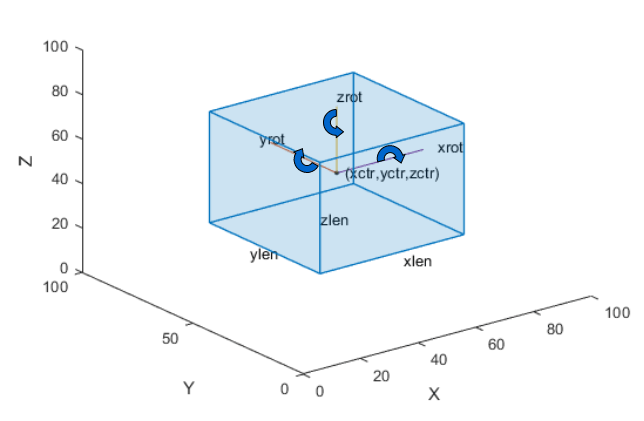bboxCameraToLidar
Estimate 3-D bounding boxes in point cloud from 2-D bounding boxes in image
Syntax
Description
bboxesLidar = bboxCameraToLidar(bboxesCamera,ptCloudIn,intrinsics,tform)ptCloudIn, from
2-D bounding boxes in an image, bboxesCamera. The function uses camera
intrinsic parameters, intrinsics, and a camera to lidar transformation
matrix, tform, to estimate the 3-D bounding boxes,
bboxesLidar.
[
returns the indices of the point cloud points that are inside the 3-D bounding boxes using
the input arguments from the previous syntax.bboxesLidar,indices] = bboxCameraToLidar(___)
[
indicates for which of the specified 2-D bounding boxes the function detected a
corresponding 3-D bounding box in the point cloud.bboxesLidar,indices,boxesUsed] = bboxCameraToLidar(___)
[___] = bboxCameraToLidar(___,
specifies options using one or more name-value arguments in addition to any of the argument
combinations in previous syntaxes. For example, Name,Value)'ClusterThreshold',0.5
sets the Euclidean distance threshold for differentiating point cloud clusters to 0.5 world
units.


